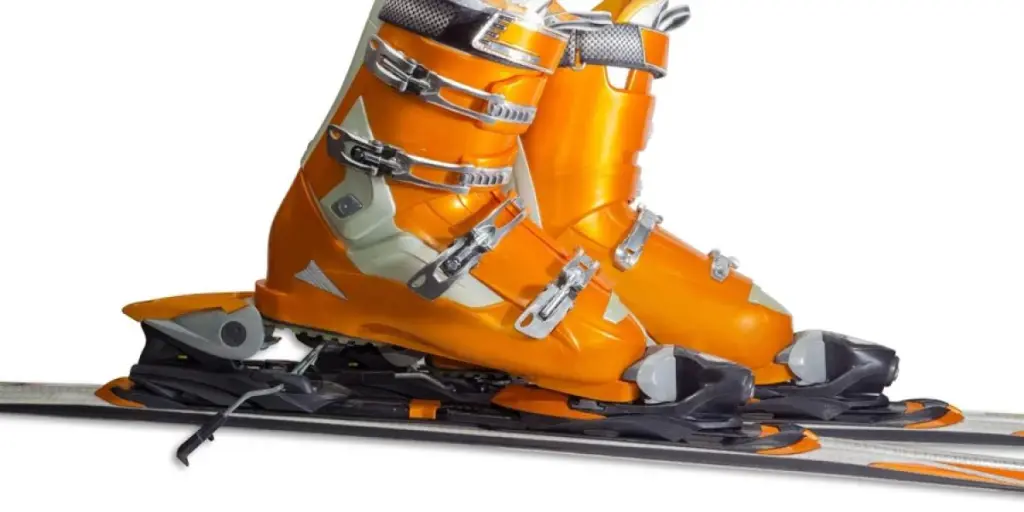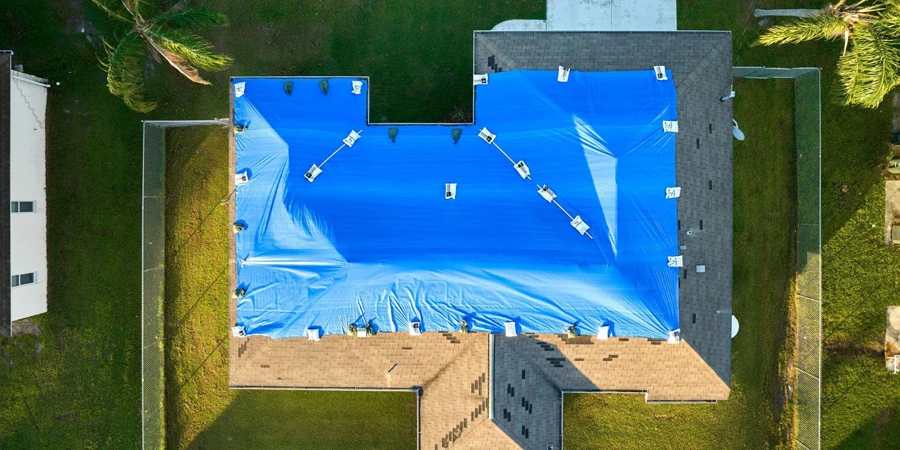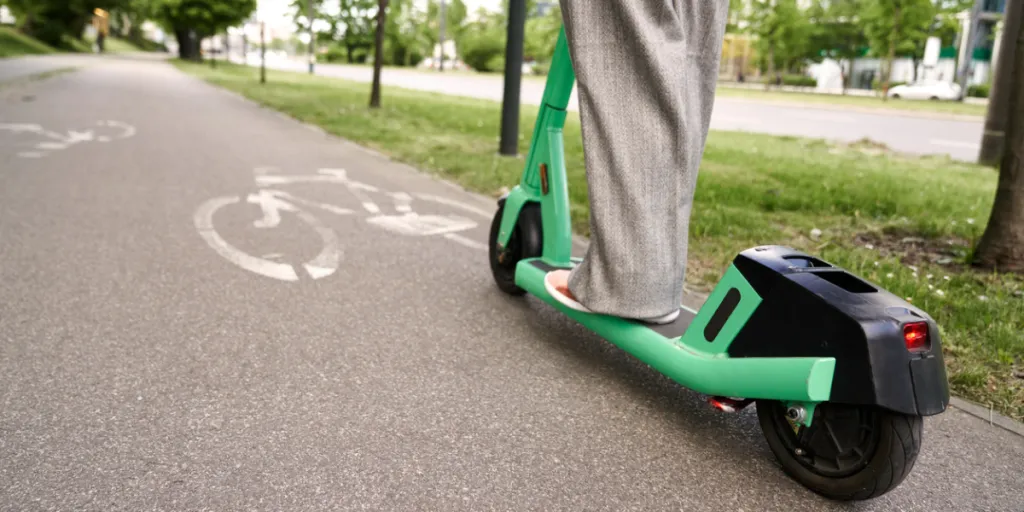In the dynamic world of outdoor equipment, air tents have emerged as a standout innovation in 2024, revolutionizing the camping experience with their unique blend of convenience and technology. These tents, characterized by their inflatable structure, offer a swift and effortless setup, a stark contrast to the traditional pole-based designs. The advancements in air tent technology not only cater to a range of outdoor activities but also promise enhanced durability and adaptability to diverse environments. With their growing popularity, air tents are redefining the standards of outdoor gear, offering a blend of practicality and comfort that resonates with the evolving demands of modern outdoor enthusiasts. This shift marks a significant development in the realm of portable shelters, setting new benchmarks in the industry.
Table of Contents:
1. Varieties and applications of air tents
2. Analyzing the air tent market in 2024
3. Key considerations for selecting air tents
4. Spotlight on leading air tent models and features
5. Conclusion
Varieties and applications of air tents
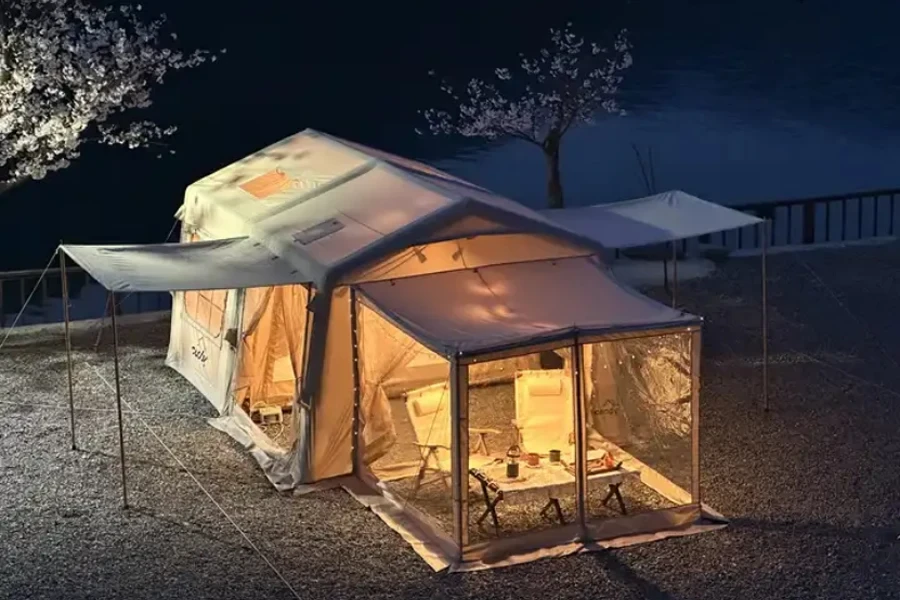
Air tents, a remarkable innovation in the outdoor equipment sector, have diversified into various types, each tailored to specific needs and environments.
Different types of air tents
The geodesic air tents, known for their robust structure, are designed to withstand harsh conditions, making them ideal for challenging terrains and extreme weather. Their interconnected struts form a stable and self-supporting framework, offering unparalleled strength in windy or snowy conditions. This design is particularly favored in high-altitude or expedition settings where reliability is paramount.
Another popular design is the tunnel air tent, characterized by its elongated shape and spacious interior. These tents are a favorite among families and groups seeking comfort and roominess. The tunnel design efficiently maximizes internal space, allowing for separate living and sleeping areas, which is a significant advantage for extended camping trips or outdoor events. Their structure, while spacious, is also remarkably stable, providing a comfortable shelter in various outdoor settings.
Dome-shaped air tents, with their classic and versatile design, cater to a wide range of outdoor activities. The dome structure offers a balance of space, comfort, and ease of setup, making it a go-to choice for casual campers and outdoor enthusiasts. These tents are particularly suited for festivals, family outings, and weekend camping trips, where ease of use and general comfort are key considerations.
Usage scenarios for air tents

The suitability of different air tents extends to a variety of usage scenarios. For family camping, where space and comfort are crucial, larger tunnel and dome-shaped tents provide ample room and the flexibility to create a home-like environment in the outdoors. These tents often feature additional amenities like room dividers and extended vestibules, enhancing the camping experience for families and groups.
Solo trekkers and adventurers often lean towards more compact and lightweight designs. Geodesic air tents, with their superior stability and streamlined setup, are a preferred choice in this category. Their robust construction offers the necessary protection against the elements, which is essential for solo expeditions in unpredictable environments.
Group expeditions, such as guided tours or scout trips, benefit from the large capacity and easy setup of tunnel and dome-shaped air tents. These designs can comfortably accommodate multiple occupants and gear, making them suitable for group activities where space and convenience are key.
In summary, the evolution of air tents has led to a range of designs, each serving distinct purposes. From the rugged geodesic tents for extreme conditions to the spacious tunnel and dome-shaped tents for family and group outings, the variety in air tents ensures that there is a suitable option for every outdoor adventure. This diversity not only reflects the advancements in tent technology but also caters to the growing and varied demands of outdoor enthusiasts.
Analyzing the air tent market in 2024

The air tent market in 2024 is experiencing a significant transformation, driven by evolving consumer preferences and technological advancements. This section delves into the current market dynamics and the impact of new technologies on air tent offerings.
Market growth and trends
Recent research indicates that the global High-pressure Inflatable Tents market, valued at USD 549.43 Million in 2022, is projected to reach USD 765.8 Million by 2028, growing at a CAGR of 5.69% during 2022-2028. This growth is attributed to several factors, including the increasing popularity of camping as a recreational activity and the rising demand for durable and easy-to-set-up tents. North America emerges as the largest market, driven by a rich array of camping sites and a growing number of camping enthusiasts. The trend towards camping is further bolstered by millennials, who account for a significant portion of active campers, influencing the market positively.
Impact of technological innovations
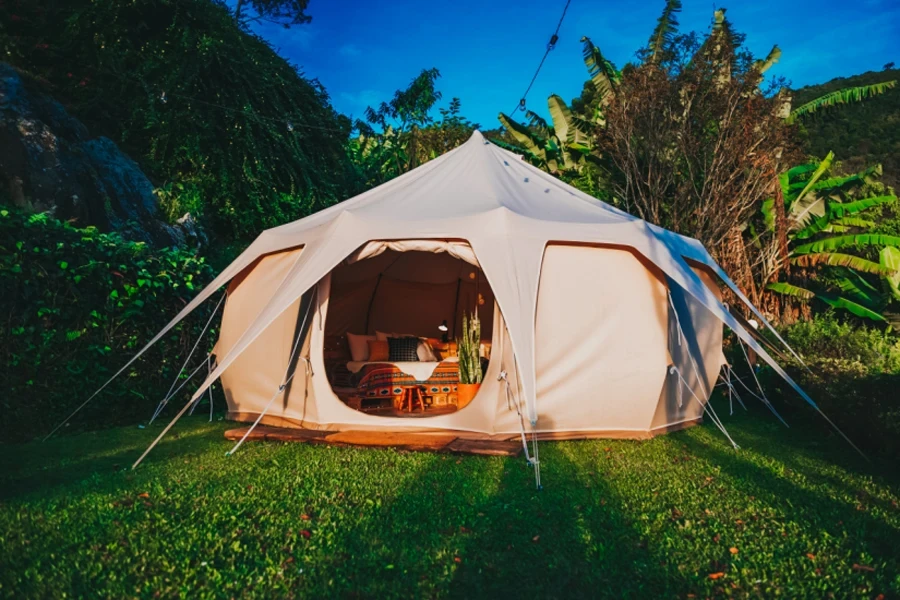
Technological innovations are playing a pivotal role in shaping the air tent market. High-pressure inflatable tents are now designed using principles of structural mechanics, with airbags expanding to form rigid columns that support the tent frame. This has led to improved performance in the field, with tents becoming more resilient to environmental factors. However, challenges such as the tight supply and increasing prices of materials like PVDF, used for coatings, pose a dilemma for manufacturers. They face the choice of either absorbing the cost increase or passing it on to consumers. Despite these challenges, companies continue to innovate, seeking alternatives that maintain quality while managing costs. The market sees a dominance of monolithic inflatable tents, with the military segment occupying a significant share of applications. This indicates a shift towards more specialized and high-performance tents catering to diverse needs, from personal use to commercial and military applications.
Key considerations for selecting air tents
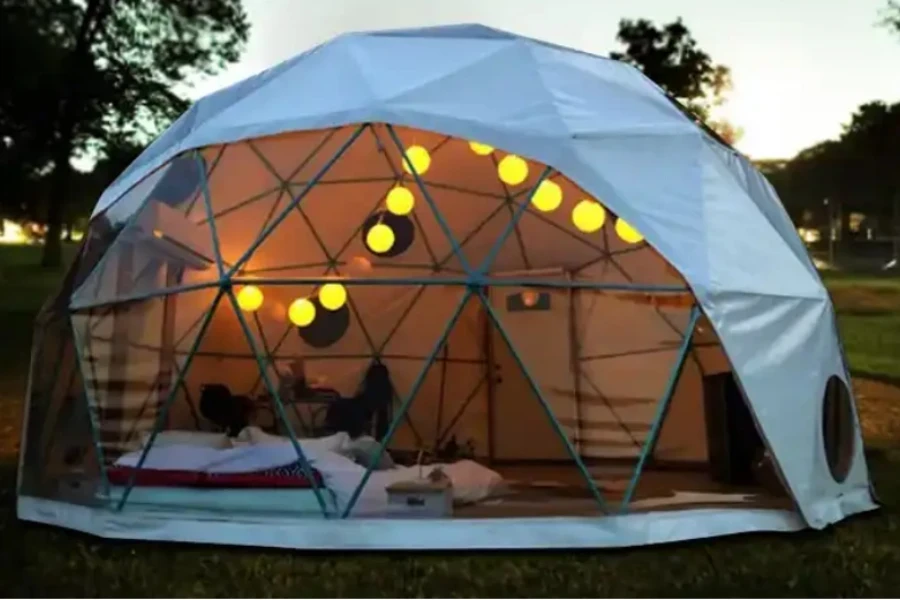
Selecting the right air tent involves a careful evaluation of materials, design, and practical features. These considerations are crucial for ensuring durability, functionality, and ease of use.
Material quality and durability
The choice of material is fundamental in determining the durability and performance of air tents. Polyester, PVC, and nylon ripstop are commonly used materials, each offering distinct advantages. Polyester is valued for its UV resistance and cost-effectiveness, making it a popular choice for lower-end products. PVC stands out for its robustness and waterproof qualities, ideal for air tents that need to withstand harsh weather conditions. Nylon ripstop, known for its toughness and lightweight properties, is often used in higher-end tents. It provides excellent tear resistance, thanks to the ripstop pattern that prevents tears from spreading. The fabric’s denier rating, indicating its thickness, also plays a role in its overall strength and durability. Heavier denier fabrics are generally stronger, but the type of thread and yarn used also influences the fabric’s toughness.
For instance, a 30 Denier nylon fabric offers a good balance between durability and weight, making it suitable for sustained hard use. In contrast, lower denier fabrics, while lighter, may not withstand rigorous conditions. The choice between nylon and polyester often comes down to a trade-off between strength and cost. Nylon is tougher and more supple, allowing for lighter and more compact tents, while polyester is more affordable and common in budget-friendly models.
Design and features
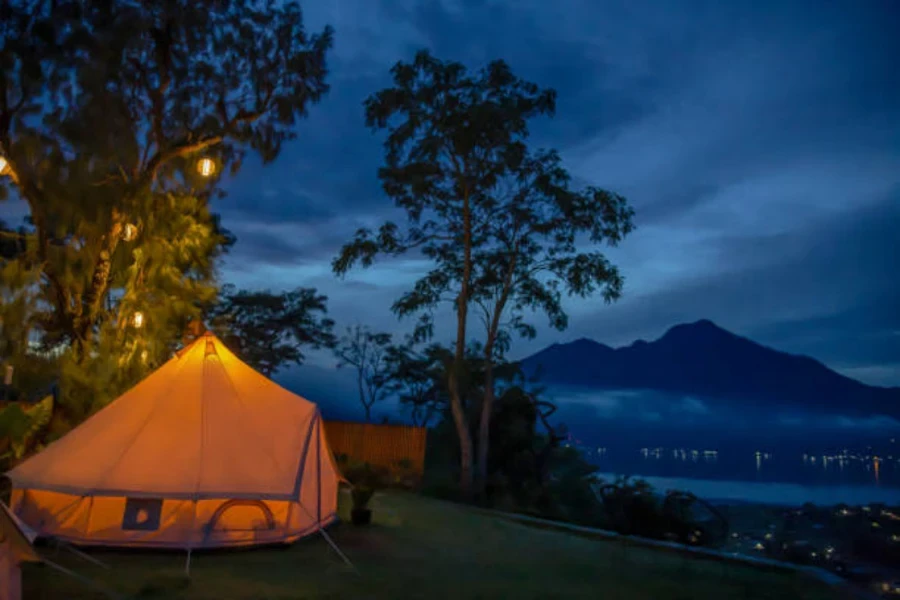
The design and features of air tents are pivotal in catering to specific camping needs. Waterproofing is a critical feature, ensuring that tents can withstand rain and damp conditions. This is often achieved through coatings like PU (Polyurethane) and silicone, each with its advantages. PU coatings are common and economical but can weaken the fabric over time. Silicone coatings, on the other hand, enhance the fabric’s strength and are more durable. For example, silicone-coated nylon not only strengthens the fabric but also does not hydrolyze, making it a more durable option than PU-coated fabrics.
UV protection is another essential feature, especially for tents used in sunny environments, as it helps prevent material degradation. Wind resistance is also a key factor, particularly for tents used in exposed or high-altitude areas. This is often addressed through the tent’s structural design, such as geodesic shapes known for their stability in windy conditions. Air tents also need to balance the need for ventilation with weather protection. Properly ventilated tents can reduce the need for waterproof/breathable fabrics, which are often heavier and more expensive.
In terms of waterproofing, air tents vary in their hydrostatic head rating, which measures the water pressure a fabric can withstand before leaking. A higher rating indicates better waterproofing, essential for ensuring dryness in wet conditions. For instance, a tent with a 3000mm hydrostatic head rating offers good protection against heavy rain, making it suitable for use in diverse weather conditions.
Size, weight, and portability
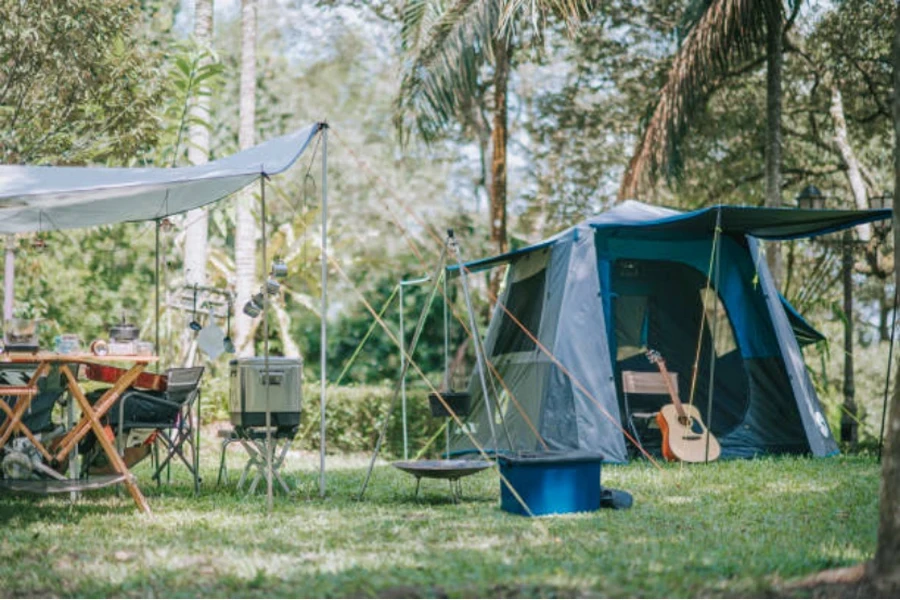
When selecting air tents, size, weight, and portability are critical factors that significantly impact their practicality and suitability for various camping scenarios.
Size is often described in terms of berth, indicating how many people a tent can sleep. However, it’s important to consider additional space for luggage and gear. For instance, a couple with camping gear should opt for a 4-berth tent instead of a 2-berth, and a family of four should consider a minimum of a 6-berth tent. This sizing up ensures adequate space for both occupants and their belongings, enhancing comfort and convenience.
The weight of air tents varies significantly based on size and materials used. Larger tents, especially those designed for family camping or extended stays, tend to be heavier due to more fabric and larger air beams. For example, air tents can range up to 45Kgs or more, depending on their size and features. This weight factor is crucial for transportation and setup, particularly if the tent needs to be carried over a distance.
Portability is influenced by the tent’s packed size and weight. Larger tents require more storage space, both when packed and in use. For instance, tunnel tents, known for their spacious design, may be taller and require more ground area, making them less suitable for backpacking but ideal for car camping. On the other hand, dome tents and geodesic tents, often more compact and lighter, are better suited for situations where space is limited, such as backpacking or camping in remote locations.
The choice between different tent types, such as tunnel, dome, or geodesic, also plays a role in their portability and suitability for different camping environments. Tunnel tents offer more living space and are ideal for family camping, while dome and geodesic tents provide stability and are more suited for harsh weather conditions or backpacking.
In summary, when selecting an air tent, it’s essential to consider the balance between size, weight, and portability. Larger, heavier tents offer more space and comfort but may be less convenient to transport and set up. Smaller, lighter tents are more portable but may offer limited living space. The right choice depends on the specific needs of the camping scenario, whether it’s a family vacation, a solo adventure, or a group expedition.
Spotlight on leading air tent models and features
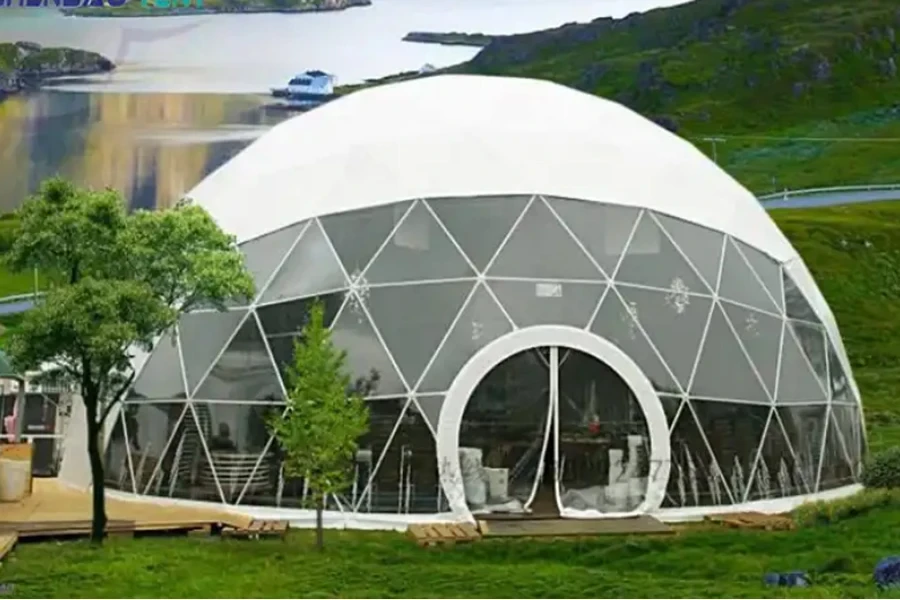
In 2024, the air tent market showcases a variety of models, each with unique features and benefits. This section provides a detailed analysis of the top models and a comparative look at their features to aid in product selection.
Review of top models in 2024
XLTTYWL Tent: This model is renowned for its blend of durability and ease of use. Its inflatable design ensures a quick setup, making it ideal for spontaneous camping trips. The XLTTYWL tent is particularly suited for campers who value efficiency and reliability in their outdoor gear.
SOLAISK Tent: Known for its robust construction and spacious interiors, the SOLAISK tent is perfect for families or groups. It provides ample space without compromising on comfort, making it a top choice for extended camping adventures where roominess and durability are key.
YOLENY Tent: The YOLENY tent stands out for its innovative design features. It’s not just about inflating and setting up; it’s about creating a comfortable living space in the wilderness. This tent is designed with the modern camper in mind, focusing on creating a home-like environment in outdoor settings.
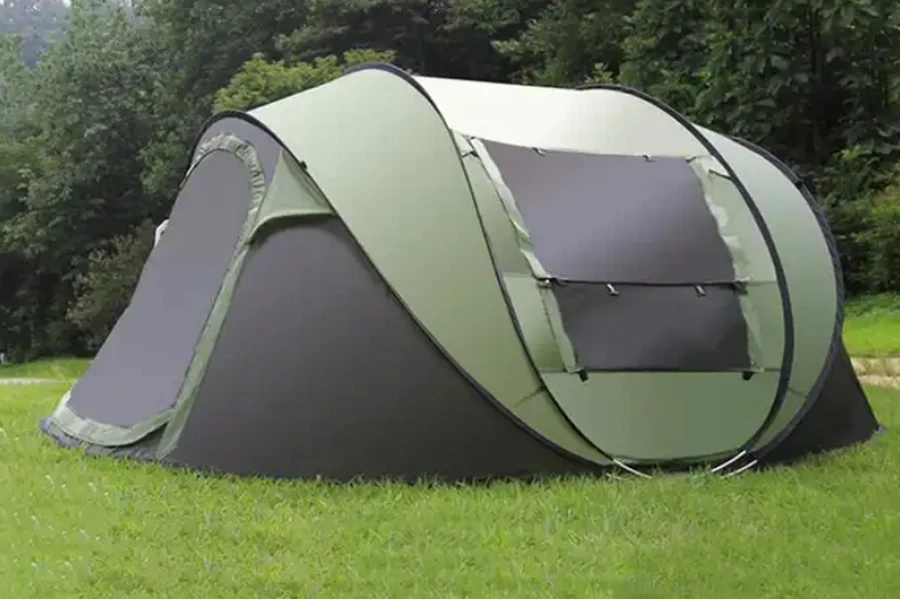
RBM OUTDOORS Tent: Offering a tent that is both lightweight and sturdy, RBM OUTDOORS focuses on maximum ventilation. This design ensures a comfortable sleep even on warmer nights, making it ideal for summer camping or in regions with milder climates.
HEIMPLANET Tent: Renowned for high-quality camping gear, HEIMPLANET’s tent promises durability, ease of use, and a design that can withstand various weather conditions. This tent is a great fit for campers looking for a reliable, all-weather option.
Each of these models showcases the advancements in air tent technology, with features like high-quality waterproof materials, UV protection, and wind resistance. However, the choice between them depends on the specific needs of the user – whether it’s space and comfort for family camping or portability and resilience for solo or small group adventures.
In conclusion, the air tent market in 2023 offers a range of models catering to diverse camping needs. From spacious family tents like the SOLAISK to compact and resilient models like the HEIMPLANET, each tent brings unique features to the table. Understanding these differences is key to selecting the right air tent for specific camping scenarios.
Comparative analysis of model features
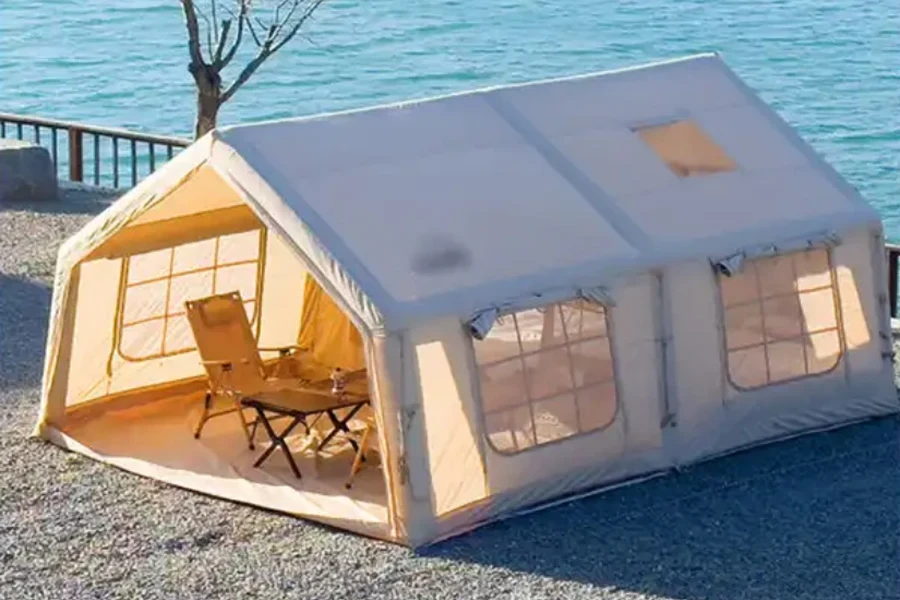
In evaluating the leading air tents of 2023, it’s beneficial to compare them based on key features rather than just the products themselves. This approach provides a clearer understanding of which tents excel in specific areas, aiding in informed decision-making.
Ease of setup and portability: The XLTTYWL Tent and RBM OUTDOORS Tent are exemplary in this category. Both models are designed for quick setup, making them ideal for spontaneous trips and campers who prioritize efficiency. The RBM OUTDOORS Tent further stands out for its lightweight design, enhancing its portability for backpackers and solo travelers.
Spaciousness and comfort: The SOLAISK Tent and YOLENY Tent excel in providing ample interior space. The SOLAISK is particularly suited for families or larger groups, offering roomy interiors without compromising comfort. The YOLENY Tent, with its innovative design, focuses on creating a comfortable living space, making it a great choice for extended stays and luxury camping.
Durability and weather resistance: The HEIMPLANET Tent is a standout in terms of durability and the ability to withstand various weather conditions. Its robust construction ensures longevity and reliability, making it suitable for campers facing diverse environmental challenges.
Ventilation and climate adaptability: The RBM OUTDOORS Tent is designed with maximum ventilation in mind, a crucial feature for camping in warmer climates. Its design ensures a comfortable sleep even on warmer nights, making it ideal for summer camping or regions with milder climates.
Innovative design and modern Features: The YOLENY Tent is notable for its modern design elements, focusing on creating a comfortable and inviting living space. This tent is ideal for campers who seek a blend of contemporary design and practical features in their outdoor accommodations.

In conclusion, when selecting an air tent, it’s important to consider how these features align with individual camping needs. Whether it’s quick setup and portability for solo adventures, spaciousness for family outings, durability for challenging environments, ventilation for warmer climates, or innovative design for a modern camping experience, each tent offers a unique combination of attributes. Understanding these features in relation to specific camping scenarios is key to choosing the right air tent.
Conclusion
The air tent market in 2023 presents a diverse range of options, each tailored to meet specific camping needs. From the ease of setup and portability of models like the XLTTYWL and RBM OUTDOORS tents to the spacious comfort of the SOLAISK and YOLENY tents, and the all-weather durability of the HEIMPLANET tent, the choices are extensive. For online retailers, understanding these varied features and their appeal to different camping scenarios is crucial. This knowledge enables them to make informed decisions about their inventory, ensuring they cater effectively to the evolving demands of the modern camper.


